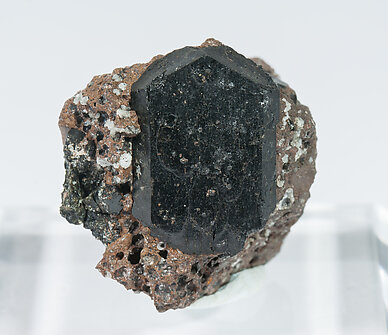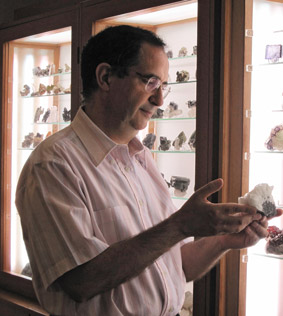
With the collection
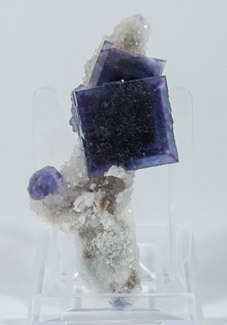
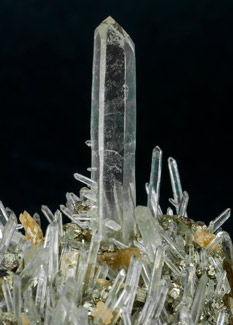
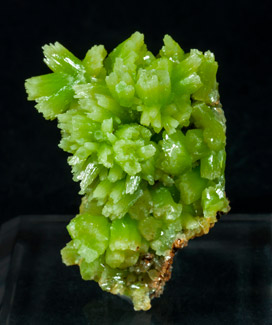
|
|
The Jordi Fabre Collection (duplicates)
September 2021 marks 50 years since I started selling minerals and 25 since I started doing it on the internet. Those who are curious to know how these 25/50 years have been will find more information here
50 years dedicated to the same activity is a lot of years, and I believe that the time has come to start doing things in a different way. Although I plan to continue offering minerals until my health or my age no longer allows, little by little I will decrease the intensity and from 2022 I will stop attending the vast majority of the shows at which I used to exhibit or just visit. I will no longer go to Tucson from 2022 and depending on how things go I will go (or not) to other shows.
 As I am lucky to have gathered a very large and quality stock during all these years of activity, and as in recent times I have been intensely buying a lot of varied material, between the 'classic' stuff and what I have bought in recent years I think there is enough to offer competitive pieces online for a long time. However, considering how demanding the collecting world has become, there could come a time in the future in which a decrease in the quality of what we were offering would begin to be noticed, and that is why I want to do something a bit different: put part of my personal collection up for sale. As I am lucky to have gathered a very large and quality stock during all these years of activity, and as in recent times I have been intensely buying a lot of varied material, between the 'classic' stuff and what I have bought in recent years I think there is enough to offer competitive pieces online for a long time. However, considering how demanding the collecting world has become, there could come a time in the future in which a decrease in the quality of what we were offering would begin to be noticed, and that is why I want to do something a bit different: put part of my personal collection up for sale.
My collection is quite extensive (more than 3000 specimens) and although it is limited to 4 countries: Spain, Morocco, Portugal and France, I think it has a good number of competitive pieces. Lately I find that I have neither the time nor the capacity to properly process everything that I was adding to the collection. In view of this fact, I've decided to change the way I was doing things and have come up with this solution:
 What better way than to share the many pieces that are not part of the 'hard core' of my collection with the family of friends and clients that has grown around this page over the years? By putting them up for sale I will no longer have them physically but they will have a new digital entity in which their photo, description and all their data will be shared online. I think it is a useful way to reclassify, with specific numbering, a good part of the specimens in my collection so that others can have them, and they will continue to be well referenced online for some time (which I will try to extend as long as possible) What better way than to share the many pieces that are not part of the 'hard core' of my collection with the family of friends and clients that has grown around this page over the years? By putting them up for sale I will no longer have them physically but they will have a new digital entity in which their photo, description and all their data will be shared online. I think it is a useful way to reclassify, with specific numbering, a good part of the specimens in my collection so that others can have them, and they will continue to be well referenced online for some time (which I will try to extend as long as possible)
 The idea is to use these duplicates to create something like an online reference which, if any institution is interested in future, can be transferred in digital format so that it can be saved as one more document / file added to those they usually handle. The institutions will not be bothered with more work due to the need for physical conservation or extra space requirements. The idea is to use these duplicates to create something like an online reference which, if any institution is interested in future, can be transferred in digital format so that it can be saved as one more document / file added to those they usually handle. The institutions will not be bothered with more work due to the need for physical conservation or extra space requirements.
In short, from now on and as long as my strength allows, I am going to use this sales page to build a digital file of a significant number of pieces from my collection that I hope will be useful. Their sale, along with the sales of the other pieces from my stock, will generate some funds that I hope will allow me to continue living with dignity and to continue maintaining, thanks to those funds, this website and FMF, both very active and fulfilling their function, that of spreading mineralogy.
To avoid any confusion: I will not sell these duplicates from my collection other than through this page, I will continue to preserve the 'hard core' of my collection, in which the most valuable and unique pieces will stay. The only exceptions which I will refrain from selling will be the minerals from Catalonia which, although they are not of great value, I will retain for sentimental reasons.
Welcome to the duplicates page of Jordi Fabre's collection, I hope you like them as much as I liked them when I had them. In fact, I always wanted to have a sales page for my own minerals at Fabre Minerals! 
 Jordi Jordi
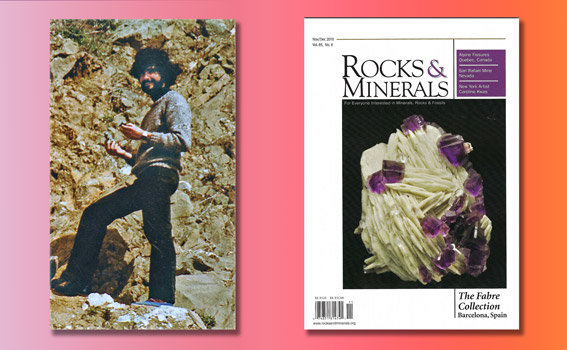
A long way to go
|


![]()
